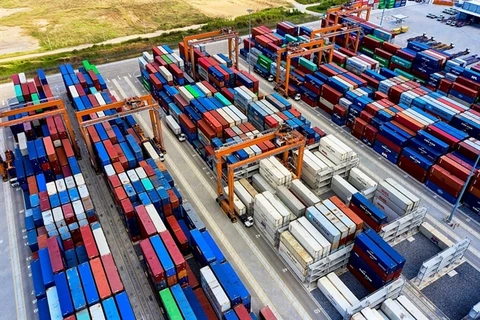Da Nang (VNA) - Digital transformation in the central city of Da Nang is taking place strongly, with the involvement of the entire political system, mass organisations, businesses and people.
The digital economy has made a significant contribution to Da Nang's gross regional domestic product (GRDP), reaching 17% last year. It has played a substantial role in the process of economic recovery and the development of a digital economy and society, gradually forming and cultivating digital habits and skills among its residents.
Director of the municipal Department of Information and Communications Nguyen Quang Thanh said the city has completed the construction of foundational databases related to citizens, businesses, household registration, civil servants and public employees, and administrative procedures.
Up to 560 databases and apps have been built to serve the supply of public services. Citizens could access these data through the common data repository khodulieu.danang.gov.vn and the open data portal opendata.danang.gov.vn.
The city has piloted the installation of a long-range transmission system at various locations to support connectivity and monitoring, such as managing ambulance vehicles and waste bins.
It has also established a free public WiFi network for residents with 430 broadcasting stations while developing the Internet of Things (IoT) infrastructure, including security and smart transportation centres, and environmental monitoring centres for water and air, in order to gather additional data.
The Da Nang Smart City mobile platform has been deployed, offering over 30 intelligent services and utilities for citizens and the community, including real-time information, search functionalities, and timely notifications.
With the launch of the digital citizen platform, each individual has a digital account and a digital data repository, allowing them to log in once and inherit their digital data for subsequent service uses. To date, the city has approximately 260,000 digital citizen accounts (over 43% of the adult population), contributing to achieving an online file submission rate of over 78%, or 1.5 times higher than the national average.
Several departments and units also launched new digital products and utilities to better serve citizens./.

























